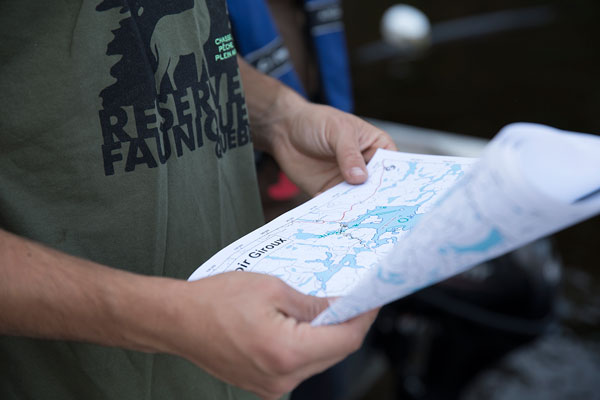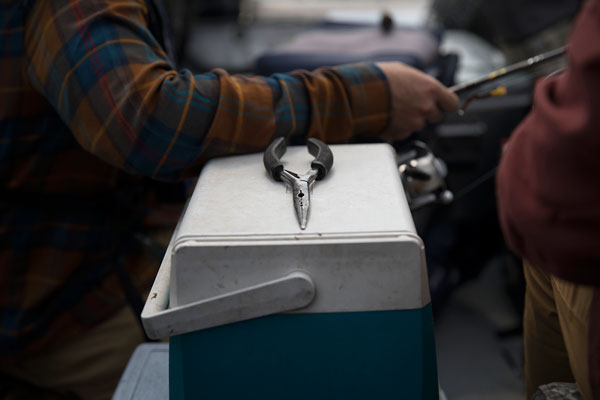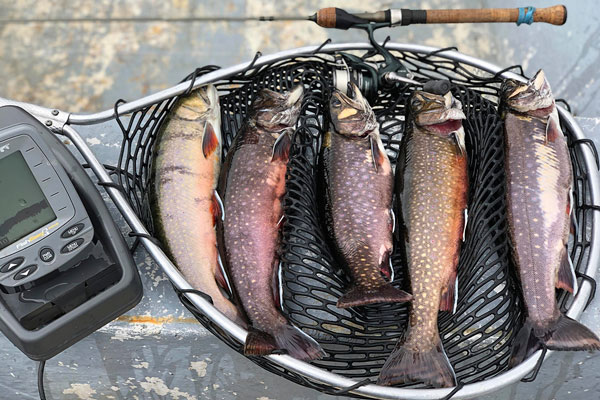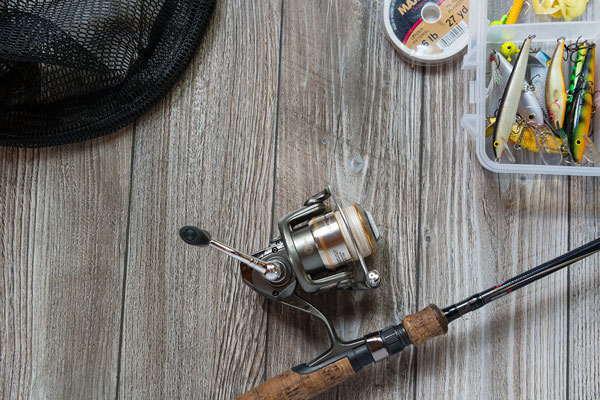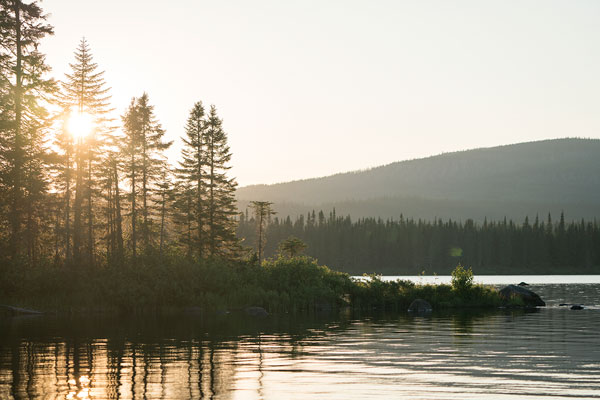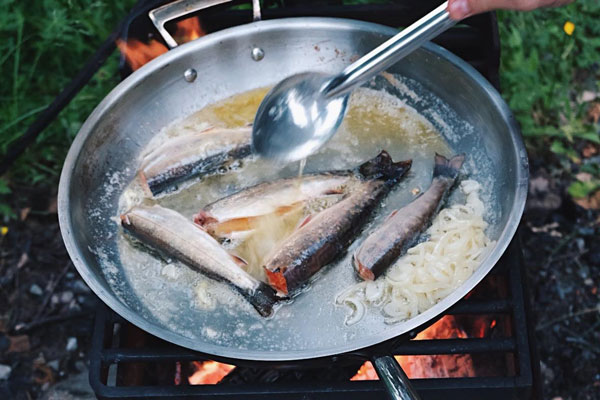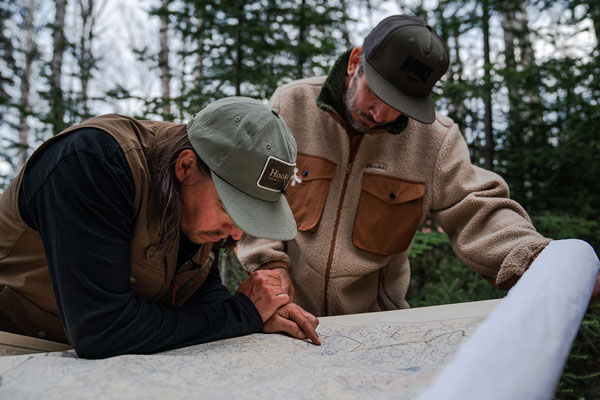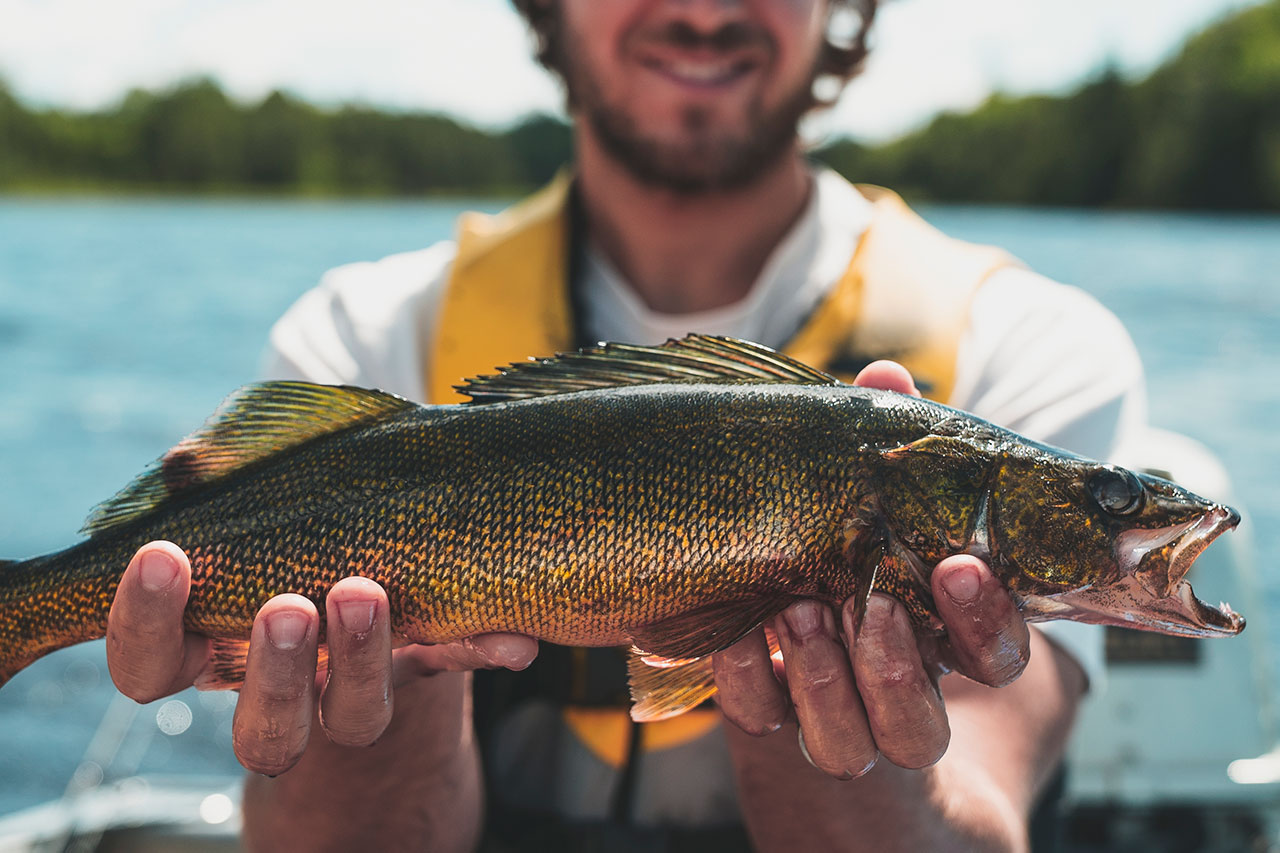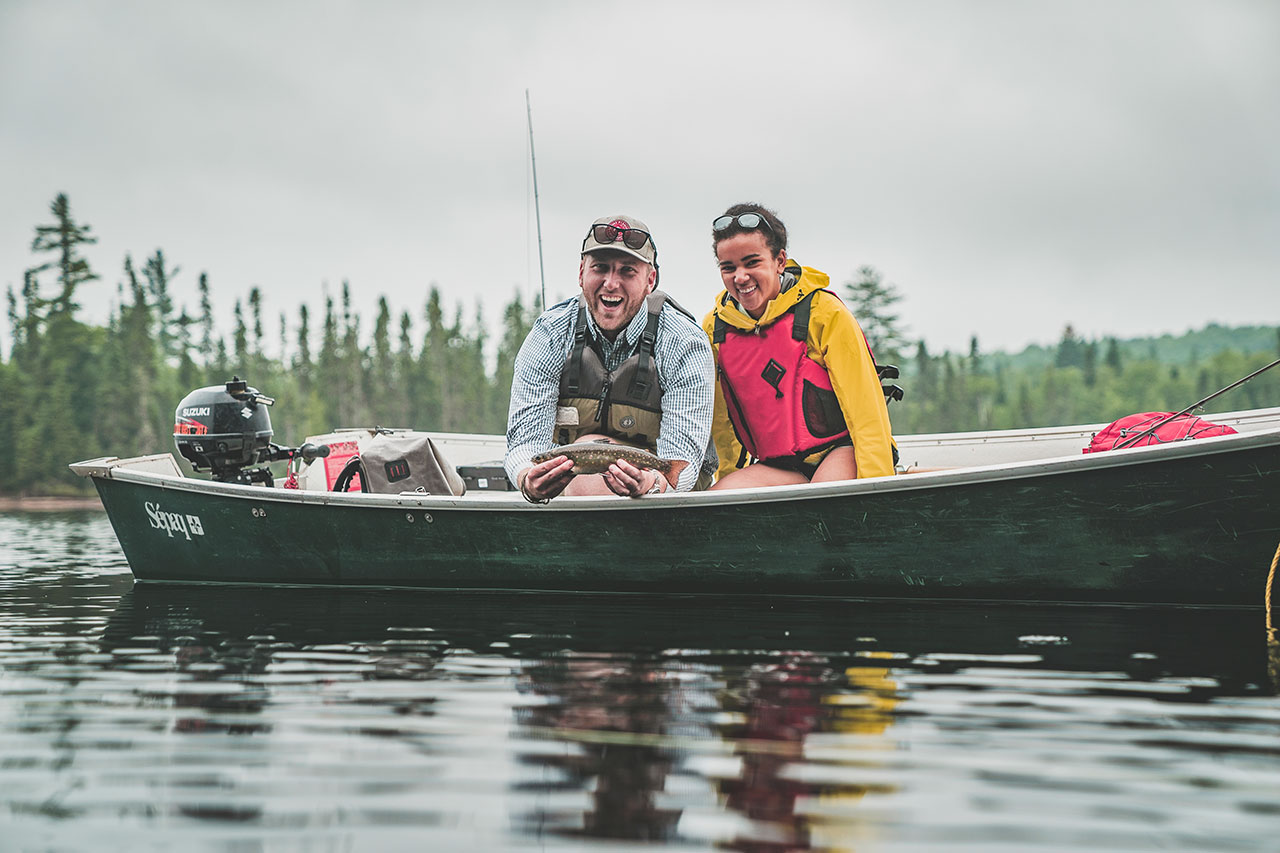Day fishing
Six golden rules
In collaboration with Michel Therrien, professional guide
I’ve lost track of the number of day fishing trips I’ve done across Québec. Some have stuck in my memory because they featured all the ingredients of a great expedition: old friends, an abundance of fish, perfect weather, and a delicious meal in the great outdoors! And even if some of my other trips weren’t quite as memorable, every one of them has played an important role in what I’ve learned about fishing.
Here are six golden rules to ensure your next fishing trip leaves you with wonderful and lasting memories.
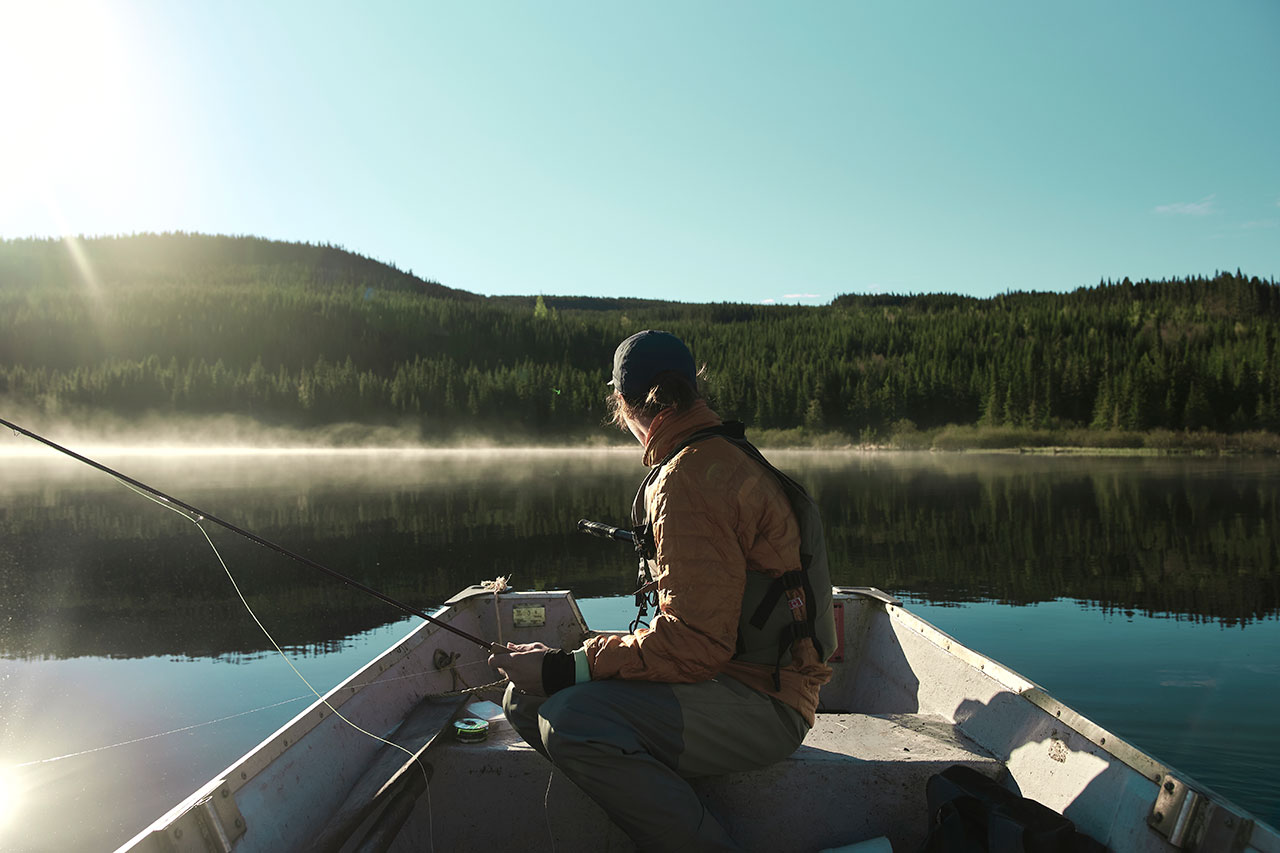 Réserve faunique des Laurentides
Réserve faunique des Laurentides
1. Choose your lake, stream, or river carefully.
Often in the fall, once the trees have shed their leaves, I stumble across new bodies of water where I decide to drop my line the following spring. I’ve even spotted fish spawning and jumping at the surface while I’m out hunting small game!
When choosing my destination, I also consult the statistics available for day fishing. As I pore over my maps, I consider the size of the lake I’ve got my eye on, and I check whether it connects with other bodies of water that are known to be teeming with fish. The staff at the visitor centers and on site are also good resources. Don’t be afraid to ask them questions. They are often familiar with sections of the area’s lesser-known streams and rivers that offer great opportunities for wade fishing.
Lastly, when choosing your lake, make sure it is suited to your gear: you can’t necessarily get to the same spots with a large boat or rowboat as you can with a canoe, which is obviously much easier to put in. Also consider the type of motor you will need. In some cases, you can rent equipment. For instance, an electric motor is ideal for achieving a good trolling speed, whereas a small gas motor is useful when fishing on larger lakes.
2. Double-check your rod, lures, and other gear.
Don’t wait until the night before you leave to examine your gear. By then, it’s a bit late to discover that your fishing line is worn out or that the battery on your electric motor is dead… Instead, do a thorough check of your equipment ahead of time, including life jackets, orientation gadgets, fishing net, etc. Remember to pack a decent-sized cooler and enough ice to keep your worms in good shape and your freshly caught fish nice and cool, all day long.
Carefully prepare your tackle box, including top, mid-depth, and bottom lures. Do the same with your flyfishing flies and silk fly lines, according to the time of year. The warmer it is, e.g., in July, the more the fish are likely to hide out in deep, well-oxygenated pools. That’s where you’ll want to present your lures and flies.
To ensure you’re dressed comfortably for fishing, bring along clothes to keep out the cold, rain, wind, and sun. And remember, weather conditions can change quickly. Other essentials to add to your bag include sunscreen, insect repellent, and waterproof matches. Lastly, a small butane-powered campstove is great for adding to the experience by cooking up your catch of the day—shoreside!
Oh, and one last thing: Be sure to bring along enough gas for your boat motor and your vehicle, depending on how much distance you plan to cover in the day (especially if your destination is a long way off the beaten path).
3. Know where you’re going.
At Sépaq destinations, free, bathymetric maps are provided showing the best fishing sectors. Plus, with the Avenza Maps app, you’ll know exactly where you are in real time, on land and on the water, with your smartphone, even if there’s no network signal. It’s a very convenient tool for quickly finding a portage route or fork in the river.
A fishfinder (sonar) is also a useful tool that can save you valuable time by indicating the depth of the water, any underwater structures, and the spots were schools of fish are hiding.
4. Familiarize yourself with the lake.
When I get out on a lake for the first time, I start by exploring it, to check water depth and detect structures like points, shoals, and shallows. I also look for adjacent streams; beaver dams; long, fallen tree trunks; and rocks that often provide shelter for all kinds of aquatic life—including fish!
Now that I know where the bottom drops off, I can adjust my trolling speed and the amount of line to let out behind the boat. That way, my lure can explore the most promising depths, according to the time of year, the water temperature, and the fish activity. While I watch my rod, I always keep an eye on the surroundings… and the fishfinder.
Once I hook my first fish of the day, I record my GPS coordinates and take a photo of the shoreline with my phone camera. This is a good way to identify strategic locations. I also try to recall how far away my lure was when the fish went for it, and what my trolling speed was.
When I’m exploring a lake with other anglers, I recommend that each person use a different lure. For example, one person might try fishing the mid-depths using minnows, while another could fly fish with a floating silk line far behind the boat. Meanwhile, a third angler could use a spoon with a worm on the end (about 40 inches beyond) and a small weight to take it deeper. This way, we test different things like depth, the type of lure, and the distance behind the boat. Each angler maintains their position in the boat so their lines don’t get tangled, and we adapt as required.
Some days, only 15% of the lake might have fish, which is why it’s important to approach it strategically, even if it means taking a few laps around the lake, so you can rule out the less promising 85%. You’ll be much more efficient that way!
5. Stay alert, watch for strikes, and control reel drag.
When the fish start to nibble, it’s time to think strategy and stay alert. I have introduced plenty of people to fishing, and over the years, I’ve witnessed some incredibly lucky catches as well as some monumental fails. That said, a rod that goes over the edge of the boat or a poorly tied knot that allows the whopper of the century to get away are two situations that are usually easy to avoid… although they make for some great fish tales!
Are more fish getting away off the same rod? Try and figure out what’s happening between the fish and the fisher. Maybe the strikes aren’t vigorous enough. Maybe your choice of hook is wrong. Maybe the reel drag isn’t adjusted right, giving the fish the upper hand.
Sometimes, a little adjustment is all it takes. I remember one time a pool teeming with speckled trout, but they only reacted when I presented from a certain direction. Once I figured out that it was because of the shoals and shallows where the fish were hiding that day, the fishing turned fantastic!
On other occasions, by letting the boat drift gently under the combined influence of the wind and the motor at low speed, I managed to nail the perfect trolling speed. And with the right lure, the fish just kept coming!
Some lures also get better results than others simply because they are better adapted to the situation. That’s why it’s good to seek advice from people who know the sector, and to stock your tackle box with several different lures of varying weights and colors. Every now and again, you choose exactly the right fly or lure, and your day turns into a day like no other! When I catch my first fish of the day, I open it up and check the contents of its stomach to see what it has been eating and I adjust my bait accordingly.
6. Make a plan and allow yourself to relax.
These days, I never go for a whole day of fishing without getting out of the boat at least once. The experience is so much better with a steaming mug of coffee and a plate of fresh fish grilled out of doors, at the most attractive vantage point on the lake.
My childhood memories include spending the entire day in the boat, a sandwich in one hand and my rod in the other, never stopping to stretch my legs. Nowadays, I no longer feel the need to squeeze every last drop of daylight out of the day as I try to bag my daily limit. Instead, I prefer to time my drive home so it coincides with the golden light of the setting sun. Plus, this is often the time of day when, if I’m lucky, I may spot a moose or bear by the side of the road.
If you’re fishing with others, I suggest you make a plan in advance (at the beginning of the day, before you’re in the thick of the action) about your goals for the day. For example, once I’ve caught two or three nice-sized trout that are big enough to make a meal, I tend to shift my focus. I might try my luck in other pools, to see if I can hook a bigger fish that will put up a memorable fight!
--
A great day of fishing depends on several criteria, including the quality time (intense, fishing-mode time) spent drifting on the lake and enjoying nature. I love kicking back and having fun when I’m out fishing, especially when I’m with family, friends, my girlfriend, or my son.
When I meet up with people I’ve fished with before, I like to probe their memories. What did they take away from their day? Sometimes, it might be the plaintive call of a couple of loons. Other times, it could be the tales we told, the anecdotes, the laughs we shared in the boat. And increasingly, it’s the on-the-spot salmon tartare we enjoyed by the side of the lake. Most of the time, these precious moments top the list of their memories more than the number of fish they managed to put on ice that day.
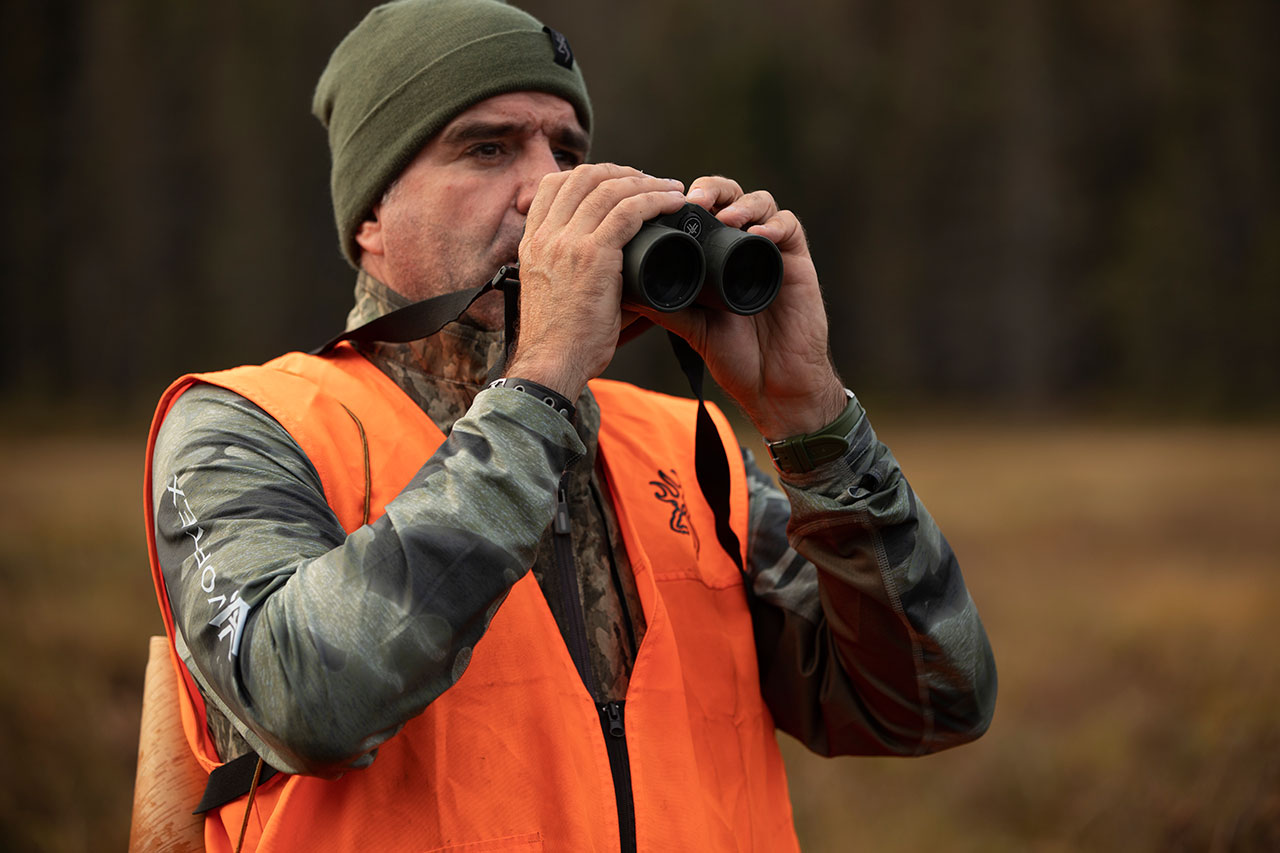
About Michel Therrien
A true Quebec hunting icon, Michel Therrien grew up surrounded by hunting, fishing, and trapping guides. Over the years, following in the footsteps of various seasoned guides has helped nurture his passion and acknowledged expertise. For over 20 years, Michel, who is also an author and columnist, has shared his knowledge about animal life and sport hunting, and has offered moose- and deer-hunting instruction. A renowned speaker, Michel founded the Chasse Québec team and enjoys making educational videos and vignettes.
